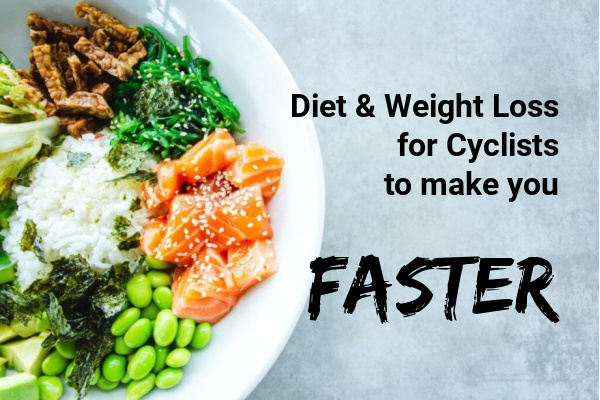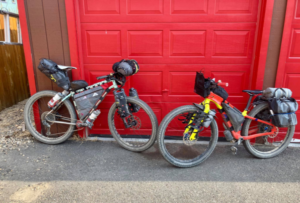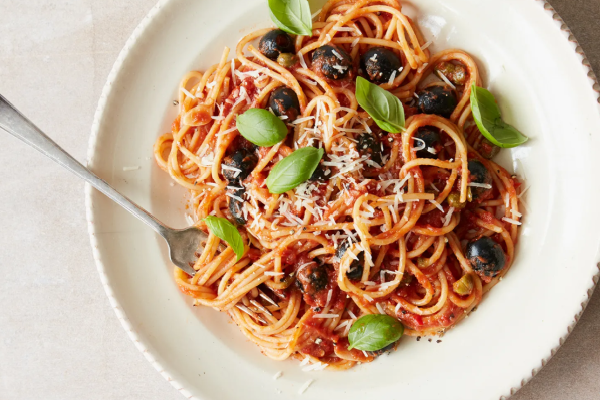
Diet And Weight Loss To Make You Faster
Nutrition and food choices are a key component of weight loss for all endurance athletes, including cyclists. When done correctly, weight loss can have a huge

There’s no off season when you fat bike.
Incredibly versatile mountain bikes, fat bikes are all-season machines that roll over snow, sand, and gravel with ease. From bikepacking, winter adventure riding, or commuting in snow flurries, the fat bike gives you the ability to explore more places in more seasons.
We recently interviewed Lakewood resident and long time fat biker, Ali Pearks, who offered advice for those interested in getting into fat biking and where to ride.
“Fat biking is a year-round activity, and a fat bike is great for bike packing, so don’t think a fat bike is limited to just riding on snow. I commute to work on my fat bike when conditions permit, and we ride fat bikes on pavement when it is too muddy to be on trails,” said Pearks.
Pearks was introduced to fat biking in 2015, by her then-boyfriend and now husband, Steuart Fish.
“He convinced me it was a great way to ride throughout the winter – he was right. It helped to have someone well versed in fat biking to get me onto the right bike and into the right gear,” she said.
Since then, Pearks and Fish have logged in thousands of miles on their fatties all across the state.


Pearks’s race CV includes the Frisco Freeze, inaugural Winter Park Fat Bike Race series, Ullr Fest race, Fat Bike Worlds at Crested Butte, a cyclocross race as part of the Front Range Rattler series, and the Yeti Beti race (the latter two had fat bike categories).
Perhaps her most notable accomplishment is doing the celebrated Mount Evans Hill Climb on her fat bike. While she was not the first to use a fat bike to ride up the 14,265 foot mountain, she was the only one on a fat bike the year she did it.
Pearks and Fish particularly like participating in the country’s longest winter mountain bike series, the Leadville Winter Bike Series hosted by the Cloud City Wheelers.
While Leadville or Telluride may not be realistic for those who live in the Front Range, there are several places to ride fat bikes nearby.
“There are plenty of places to ride in the Front Range but they are not groomed, so it is vital that you know what the conditions are before you go,” said Pearks.
“Bear Creek Lake Park, Flying J, Three Sisters/Alderfer Park, Staunton State Park, and Cub Creek Trail are some of our local go-tos. Brainard Lake Recreation Area is a trek from Denver but is worth the drive,” she suggested.

A fat bike is key to riding on snow; riding a regular mountain bike will really just be an exercise in frustration for you and for everyone else riding the same trails after you.
It is becoming more common for people to have custom wheel sets made for summer riding; these wheels have fat bike hubs but 29+ rims, so you can run 29+ tires on them. The Manitou Mastodon fork and the Rock Shock Bluto fork are two suspension forks I have used that allow your fat bike to have front suspension. Add some 29+ wheels and a suspension fork to your fat bike and you have a great plus-sized hardtail mountain bike.
This might involve some trial and error. My first bike was too heavy and my second bike was too big, and it made a difference when it came to how I enjoyed my ride. If you have the chance to demo bikes, I highly recommend that.
There are plenty of opinions out there on what the right shoes are or the right pants, or whether you should have gloves or pogies. You will need to try things and not everything will work for you the way it works for someone else.
Good Facebook groups are Front Range Fatties, Summit County Fat Bikers, and Happy Jack Fat Bikers INC. We also follow the Cloud City Wheelers Facebook page for grooming updates in Leadville.
Staunton State Park gives fantastic weekly updates on their trail conditions on both Facebook and Instagram. Particularly at the beginning and end of the season, conditions can change quite drastically from one day to the next. We bring snowshoes as backup in case when we get to the trailhead we find that the conditions aren’t good for fat biking.
A lot of effort goes into grooming trails, and all it takes is one person with too-high tire pressure or stomping through the packed snow (post-holing) to ruin it for everyone else.

Nutrition and food choices are a key component of weight loss for all endurance athletes, including cyclists. When done correctly, weight loss can have a huge

Photos are rolling from Mt. Blue Sky/Bob Cook Memorial Hill Climb p/b Team Evergreen on that was held this past weekend. The day lived up

Pad Thai is a popular street food in Thailand, which is whipped up quickly and packed full of flavor. It’s one of our favorite post-ride

Tubless Tires: Myth or Magic? Justin Bolinger of I Know a Guy Bicycles “UNBOXES” the Truth about this setup (Should you go Tubeless?) Recent Posts

Last week, Douglas County hosted the Natural Grocers Criterium at their sheriff’s training facility, and the camera of Ryan Muncy/Ryan Muncy Photography was on the scene

When you are looking to refuel at lunchtime, go for carbs and quality protein – this pasta dish is ideal. Cycling takes energy, and energy come